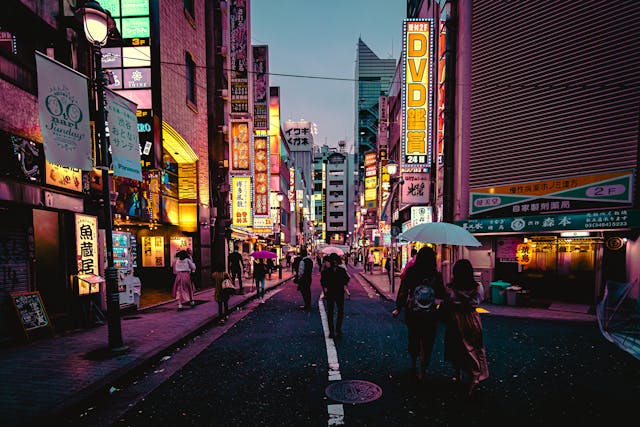Introduction
Walking is one of the best ways to experience Tokyo’s dynamic neighbourhoods and vibrant atmosphere. However, navigating this sprawling metropolis can be a challenge for newcomers. With its mix of busy streets and serene parks, Tokyo offers diverse walking experiences. To help you feel more at ease and fully enjoy your walks, here are five simple tips to get comfortable walking in Tokyo.
Table of Contents:
1: Choose the Right Footwear
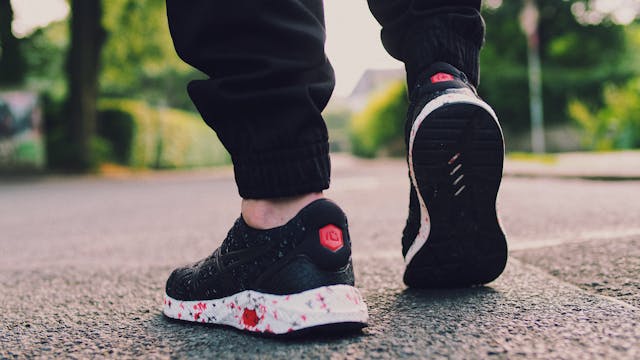
In a city as vast and diverse as Tokyo, comfortable and suitable footwear can make all the difference.
- Invest in Quality Shoes: Tokyo’s streets can be challenging, from bustling shopping districts to uneven pavements. Choose shoes that provide ample cushioning and support. For example, if you’re exploring areas like Shibuya or Shinjuku, which are known for their crowds and longer walking routes, opt for walking shoes or sneakers with good arch support and shock absorption.
- Consider Weather Conditions: Tokyo experiences a range of weather conditions. In summer, it can be hot and humid, so breathable, moisture-wicking shoes are beneficial. In contrast, winter might be rainy, so waterproof shoes can keep your feet dry. For instance, during the rainy season (梅雨, tsuyu) from June to July, water-resistant shoes can prevent your feet from getting soaked.
- Break Them In: To avoid blisters, wear your shoes around the house or on shorter walks before tackling a full day of exploration. If you’re planning a long day exploring the markets of Ameyoko in Ueno or the historical streets of Asakusa, having well-broken-in shoes will ensure you stay comfortable.
2: Leverage Navigation Tools
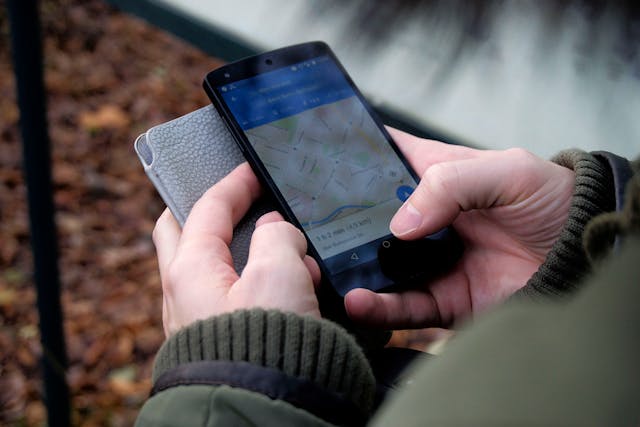
Modern technology can significantly ease your navigation challenges in Tokyo.
- Google Maps: This app is invaluable for getting precise walking directions. It offers real-time updates and suggests the best routes. For example, if you’re walking from Shinjuku to Harajuku, Google Maps will guide you through the most efficient route and highlight interesting spots along the way.
- Citymapper: Known for its detailed transit and walking directions, Citymapper helps you plan routes that integrate various modes of transport. If you’re trying to get from Roppongi to Shibuya, Citymapper can show you walking routes combined with subway options to make your journey smoother.
- Local Apps: NAVITIME and Tokyo Metro apps provide tailored transit information and walking directions. These apps are especially useful for finding the best routes in areas with complex public transport systems like Ikebukuro.
3: Learn Essential Japanese Directions
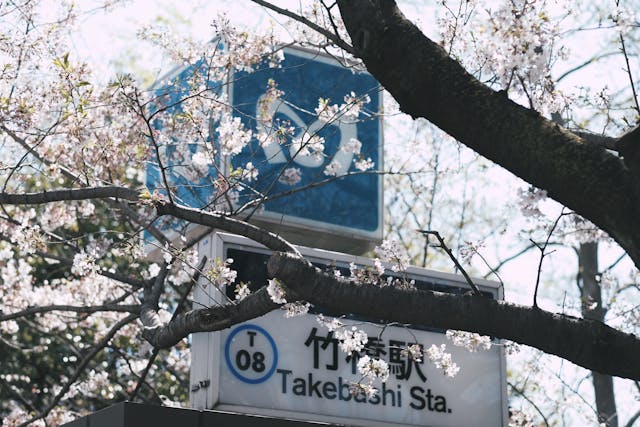
Knowing some basic Japanese can enhance your walking experience and help you interact with locals.
- Basic Phrases: Learning essential phrases such as “どこですか?” (Doko desu ka? – Where is it?) and “左” (Hidari – Left) can be incredibly useful. For instance, if you’re lost in the bustling area of Akihabara, asking a shopkeeper for directions using these phrases can quickly get you back on track.
- Use Visual Aids: Many street signs and maps in Tokyo are bilingual, but recognizing Japanese characters can help. Familiarize yourself with common terms like “駅” (Eki – Station) and “交差点” (Kōsaten – Intersection) to better understand your surroundings.
- Ask for Assistance: Don’t hesitate to ask for help if needed. Most Tokyoites are accustomed to interacting with tourists and will be happy to assist. For example, if you’re trying to find the famous Tsukiji Outer Market and get lost, asking a nearby local using basic Japanese phrases can be very effective.
4: Stay Hydrated and Take Breaks

Walking around Tokyo can be exhausting, so it’s crucial to stay refreshed and rested.
- Carry a Water Bottle: Staying hydrated is essential, especially during Tokyo’s hot and humid summer months. Many convenience stores, like 7-Eleven and Lawson, offer a wide selection of beverages, so you can refill your water bottle frequently.
- Find Rest Spots: Tokyo is filled with parks, benches, and cafes where you can take a break. For example, you can relax in Yoyogi Park after exploring the nearby Harajuku area or take a break at a café in the trendy Shimokitazawa neighbourhood.
- Listen to Your Body: Pay attention to signs of fatigue. If you’re exploring areas like the sprawling Odaiba or the busy streets of Ginza, taking breaks to sit down and recharge is perfectly okay.
5: Embrace Tokyo’s Walking Culture
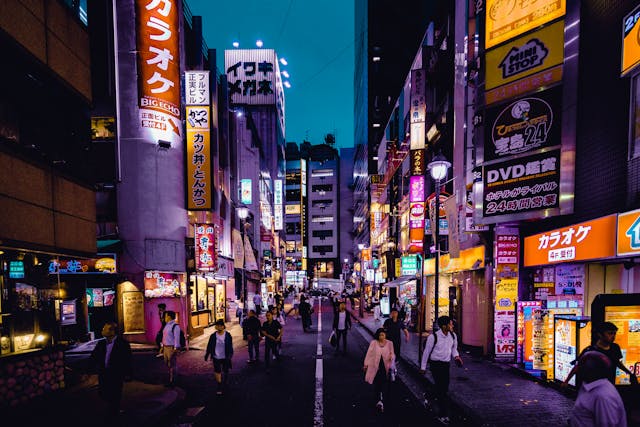
Tokyo’s streets are rich with experiences and walking is a great way to immerse yourself in the city’s culture.
- Explore Diverse Neighborhoods: Each Tokyo neighborhood has its own charm. Wander through the eclectic shops and street art of Shimokitazawa or enjoy the historical architecture and traditional shops in Yanaka.
- Experience Street Life: From street performers in Shibuya to food stalls in Asakusa, Tokyo’s street life is vibrant and engaging. Take your time to enjoy these lively aspects of the city.
- Observe Local Etiquette: Follow local customs like walking on the left side of sidewalks and waiting for pedestrian signals at crossings. These small practices help you blend in and navigate the city smoothly.
Conclusion
Walking in Tokyo is a fantastic way to experience the city’s rich culture and vibrant energy. By following these tips, you’ll be well-prepared to explore Tokyo’s diverse neighbourhoods and attractions comfortably. Embrace the city’s pedestrian culture, stay hydrated, and enjoy the unique experiences that await around every corner.
FAQ
What kind of shoes are best for walking in Tokyo?
Comfortable, supportive, and weather-appropriate shoes are ideal. Look for walking shoes or sneakers with good cushioning and support.
Are there pedestrian-only areas in Tokyo?
Yes, there are pedestrian zones such as Takeshita Street in Harajuku, known for its vibrant street culture, and Nakamise Street in Asakusa, which offers traditional shopping and street food.
How safe is it to walk around Tokyo?
Tokyo is generally very safe for pedestrians. However, as with any major city, stay aware of your surroundings and follow local safety practices.
Can I find restrooms while walking around?
Yes, public restrooms are available in many parks, train stations, and shopping areas. Convenience stores also often have restrooms for customers.
Is English signage common in Tokyo?
Many major areas and public transportation systems have English signage, but learning a few Japanese phrases can enhance your experience and make navigation easier.

